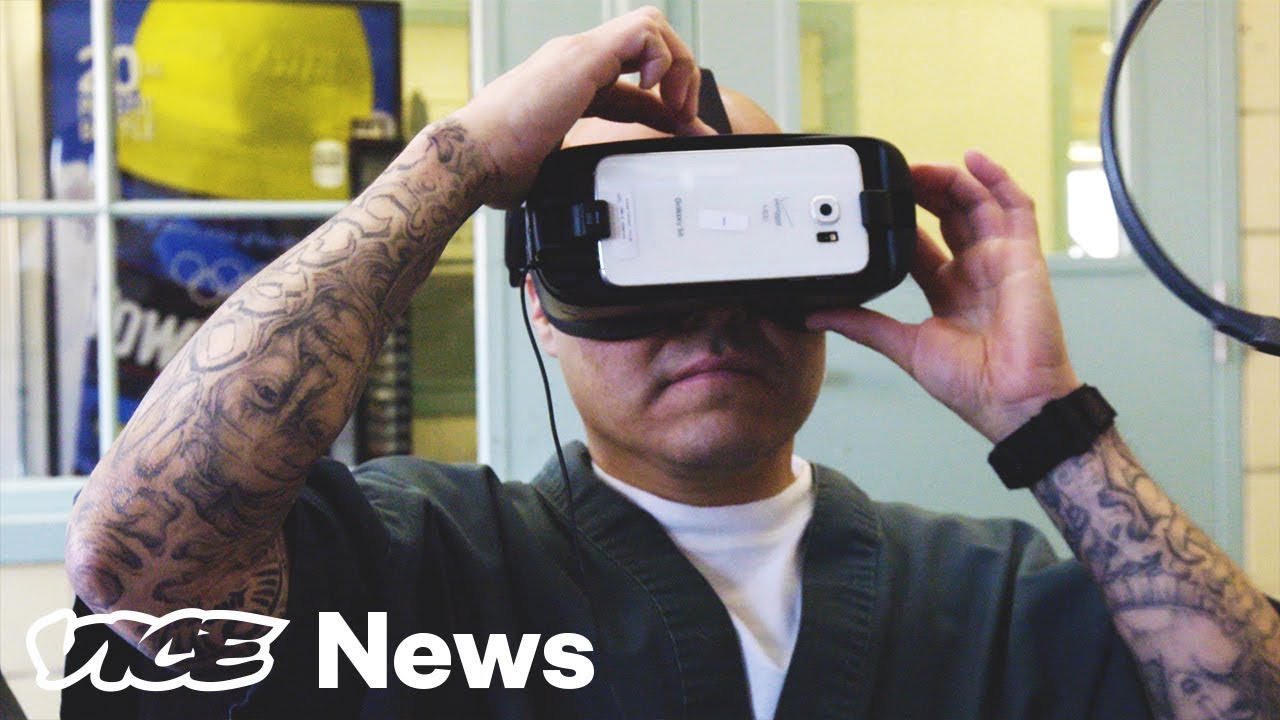Inmates Are Using VR For A Chance To Get Out Of Prison

Six Colorado inmates sentenced to decades in prison as teenagers in the ’80s and ’90s thought they would never get out.
During their 20-plus years behind bars, technology has changed the outside world dramatically.
The criminal justice system has changed, too, becoming more forgiving of people who commit crimes as juveniles. Since 2005, the U.S. Supreme Court has slowly chipped away at harsh, mandatory sentences for kids, ultimately finding in 2012 that it’s unconstitutional to sentence juveniles to life without parole.
This year, Colorado started an early-release program for people convicted as juveniles who have already served 20 years of their sentences. To get ready for life on the outside, inmates in the three-year program use virtual reality to prepare for stressful situations and practice skills they never learned as teens, like doing laundry and grocery shopping.
What is the Last Mile Virtual Reality Lab program and how does it work to prepare prisoners for their release?
In recent years, virtual reality (VR) has become a popular tool in various fields, ranging from gaming to healthcare. However, a new trend has emerged in the field of criminal justice, where virtual reality is being used to help inmates get a chance to leave prison temporarily.
As part of a pilot program launched in 2019 by The Last Mile, a nonprofit organization that provides technical training and guidance to inmates, prisoners at San Quentin State Prison in California were introduced to VR as a way to experience life outside prison walls. The program, called “The Last Mile Virtual Reality Lab,” was developed to provide incarcerated individuals with a glimpse of what the outside world looks like and give them a chance to work towards a better future.
The VR technology used in the program allows inmates to experience different scenarios that they may encounter if they were to be released from prison. For example, they can simulate a job interview or a commute to work, which are essential skills they need to learn to be successful in the real world. By exposing them to these experiences in a virtual environment, they can develop the necessary skills to navigate the job market and hopefully secure employment once they are released.
The Last Mile Virtual Reality Lab has been a huge success so far. Inmates have reported feeling more confident and prepared for life outside of prison, and some have even gone on to find employment after their release. The program has also received positive feedback from prison officials, who believe that VR technology has the potential to significantly reduce recidivism rates.
However, the use of VR in prison programs is not without controversy. Critics argue that it is a luxury that is not affordable to most prisons, and that the limited resources should be spent on more essential programs such as mental health counseling and substance abuse treatment. Additionally, there are concerns that VR technology may be used to hide the harsh realities of life behind bars, which could negatively impact the rehabilitation process.
Despite these concerns, the potential benefits of using VR technology in prison programs cannot be ignored. The Last Mile Virtual Reality Lab has shown that providing inmates with a chance to experience life outside prison walls can have a positive impact on their rehabilitation and reduce recidivism rates. With further research and development, VR could become an essential tool in helping inmates prepare for a successful reentry into society.









This Is Why the Childhood of Rabbits Is so Terrible
3 Years Living In A $1900 Renovated RV – Her DIY Mods & Lessons Learned
The Truth About Full-Time Family Travel!
The Mexican Restaurant Hidden in a Barn on a Rural New York Farm
They told me gardening like This wouldn’t work, I didn’t listen